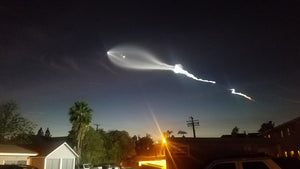July- Observing Lagoon Nebula, Ptolemy's Cluster and Eagle Nebula
Observing the Lagoon Nebula: Unveiling the wonders of M8
The Lagoon Nebula, also known as Messier 8 (M8), is a captivating celestial object that enthralls both amateur and professional astronomers alike. Situated in the constellation Sagittarius, this diffuse emission nebula offers a breathtaking spectacle of cosmic beauty.
Spanning an area of approximately 90 light-years it is located around 5,000 light-years away from Earth. Its distinctive shape resembles a celestial lagoon, thus earning its name. The nebula is a site of active star formation, harboring young and massive stars within its dense clouds of gas and dust.
Under dark skies, individuals with good eyesight may even catch a glimpse of the nebula without the aid of binoculars or a telescope. However, to fully appreciate its intricate details, binoculars or a telescope are recommended.
With binoculars, the Lagoon Nebula becomes a mesmerizing sight. Its ethereal glow can be readily observed, especially under suburban skies. Through a telescope with a low-powered eyepiece, viewers can witness the Lagoon Nebula in all its glory. The dark band that runs vertically through the center of the nebula becomes apparent, accentuating its intricate structure. In the western hemisphere, the nebula shines brightest, while the eastern side showcases NGC 6530, a stunning open star cluster embedded within the nebular clouds.
Observing the Lagoon Nebula is an awe-inspiring experience that unveils the mysteries of stellar birth and evolution. With binoculars or a telescope, one can immerse themselves in the breathtaking beauty of this celestial wonder.
Ptolemy's Cluster (M7)
Ptolemy's Cluster, also known as Messier 7 or M7, is a spectacular open star cluster located in the constellation Scorpius. Named after the ancient astronomer Claudius Ptolemy, this cluster is a remarkable sight in the night sky. Comprised of hundreds of hot, young stars, Ptolemy's Cluster is estimated to be around 200 million years old and lies approximately 980 light-years away from Earth. Its stars, with a combined visual magnitude of around 3.3, create a striking celestial display. Best observed with binoculars or a small telescope, this stellar gathering serves as a reminder of the intricate beauty and diversity found within our galaxy.
Eagle Nebula (M16)
The Eagle Nebula, also known as M16, is an iconic and patriotic celestial object that captures the imagination of stargazers worldwide. Located in the constellation Serpens, this stunning emission nebula is famous for its striking "Pillars of Creation," which resemble majestic columns reaching out into space. These pillars are vast clouds of gas and dust where new stars are forming, symbolizing the birth of cosmic fireworks.
This "star-spangled" nebula, shines brightly with a patriotic spirit, reminiscent of the Fourth of July celebrations. Just as fireworks light up the night sky with bursts of color and awe, the Eagle Nebula dazzles us with its intricate structures and vibrant hues. It serves as a reminder of the beauty and grandeur of the universe, much like the fireworks that grace our Independence Day festivities.
Observing the Eagle Nebula through a telescope reveals the intricacies of its stellar nursery, where new generations of stars emerge, spark and shine. So after this Fourth of July, while admiring the terrestrial fireworks, take a moment to gaze at the cosmic fireworks of the Eagle Nebula and let it ignite a sense of wonder and awe in your heart.







